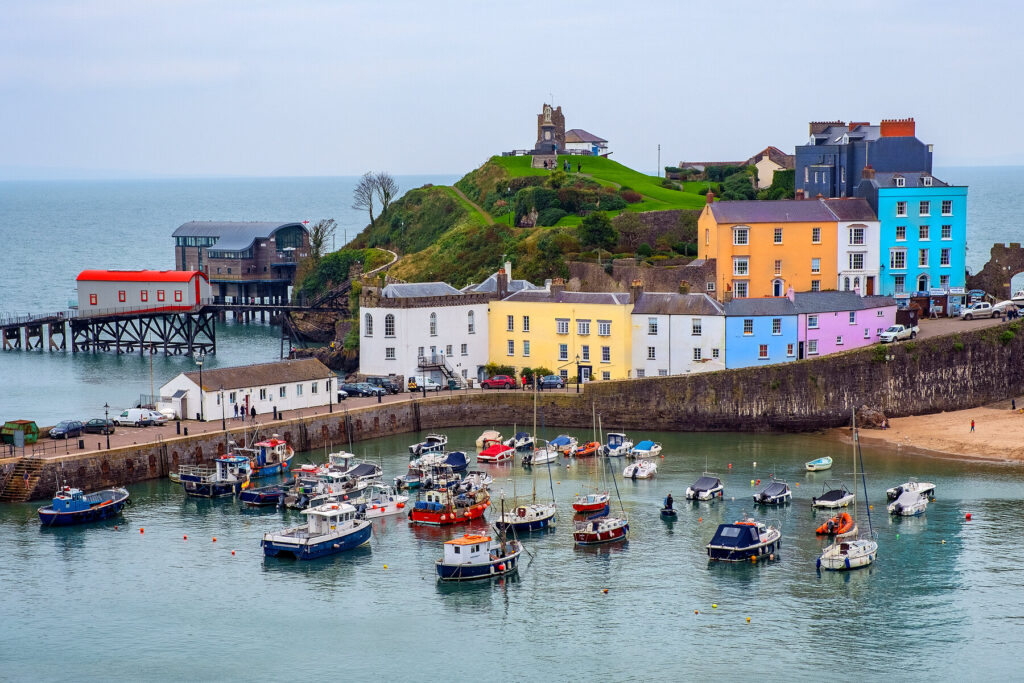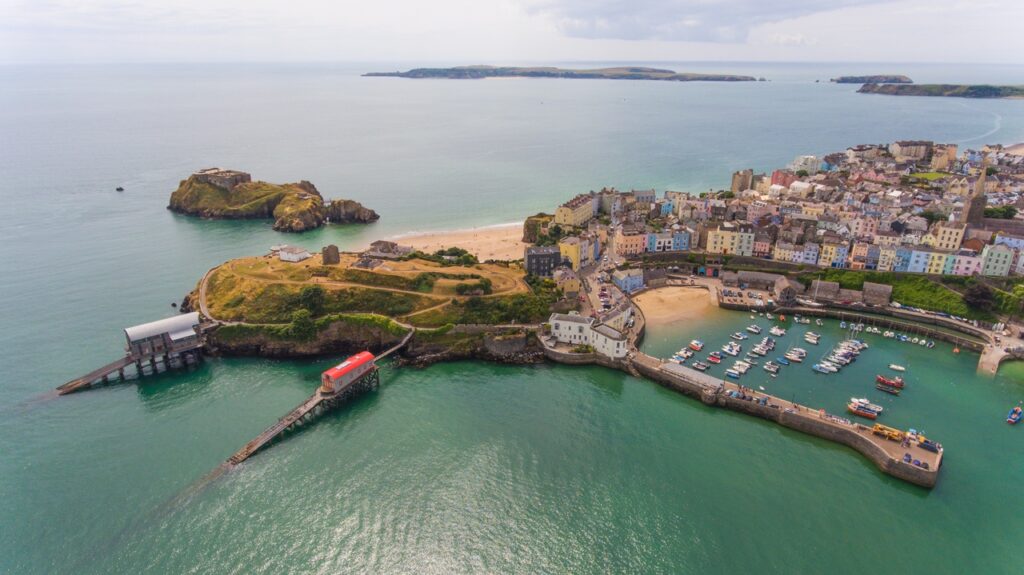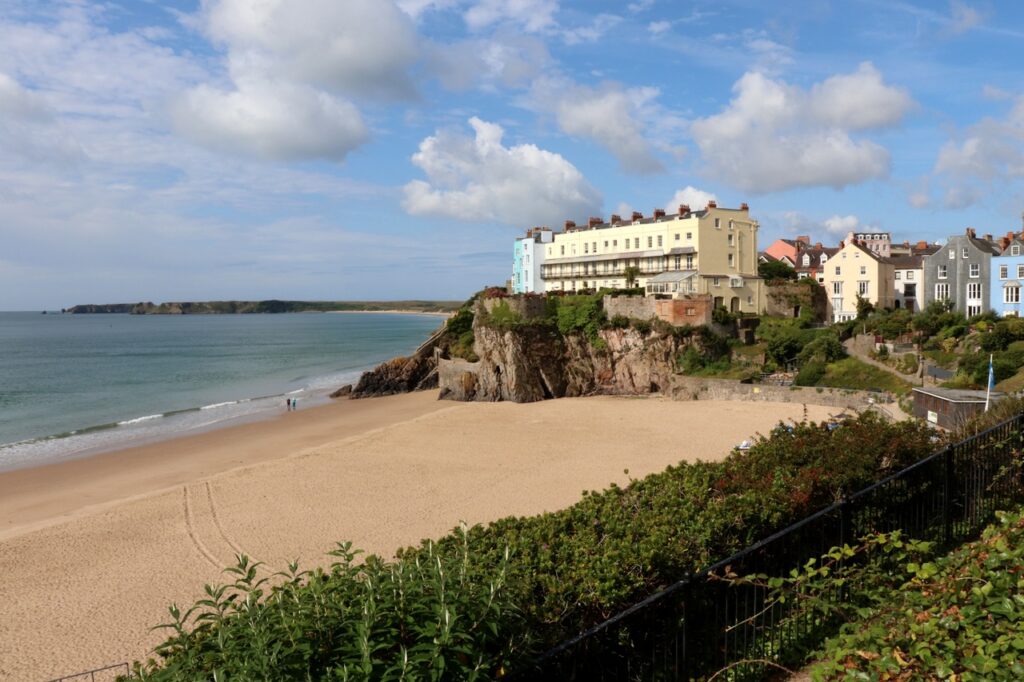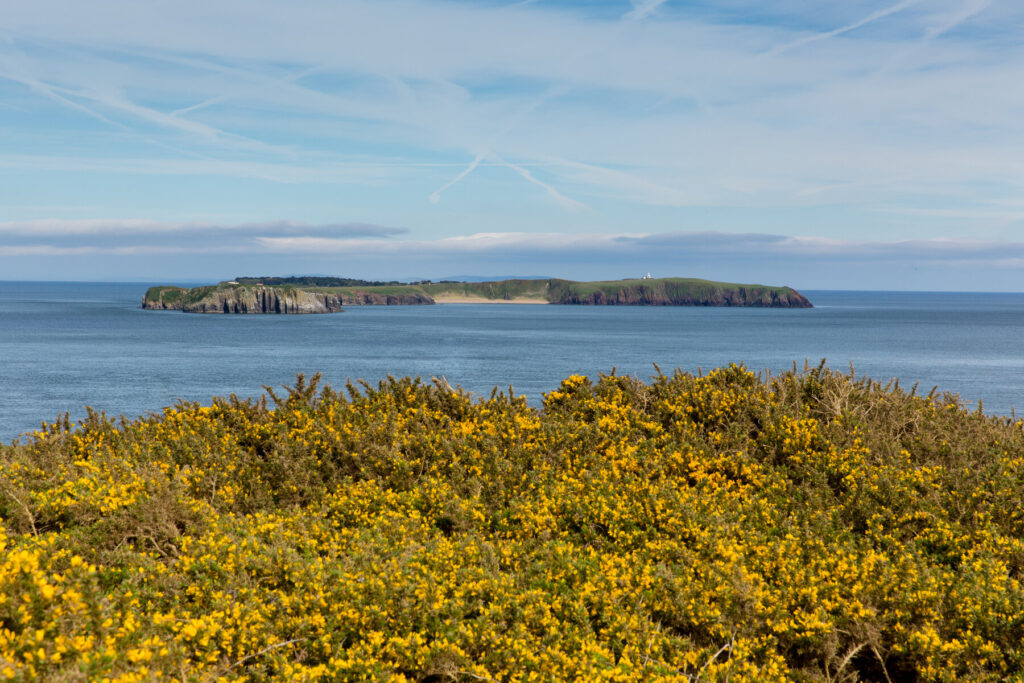In the endless debates about Britain’s most attractive seaside resort – pointless but good fun – Tenby is usually a frontrunner.
One thing is for certain: its setting is peerless, and this much you’ll appreciate when you reach The Norton and observe the curve of terraced buildings in all their pastel-coloured glory – mint green, salmon pink, lemon yellow, sky blue – above the tiny, stone-built harbour, itself surrounded by piles of lobster creels, with fishermen’s cottages tucked into every nook and cranny in the cliff.
Tenby’s charms of course are no secret, and its streets and beaches can be tainted by the sheer numbers of tourists and day-trippers who flock here during the summer. But come any other time and this spectacular Welsh seaside town will leave a lasting impression, for all the right reasons.
What to see and do in Tenby
Town walls
Strengthened by Jasper Tudor (Earl of Pembroke and uncle of Henry VII), about half of the original 20ft-high town walls survive intact, including the Five Arches, about halfway along. Described by Augustus John as like ‘a piece of cheese gnawed by rats’, this semicircular barbican was used as an everyday entrance by town citizens, but unbeknownst to invaders had lots of hidden lookouts for surprise attack.

So enamoured were the locals with their walls that in 1989 they founded the Walled Town’s Friendship Circle, which some 150 other walled towns have since joined. Head through the arches and you’ll find yourself on St George Street and now in the thick of it: cafés, restaurants, ice-cream parlours and sweet shops.
St Mary’s Church
The first thing you notice upon entering the mostly 15th-century St Mary’s Church – a cool, quiet refuge from the hubbub outside – is the size of the place, looking much bigger inside than it does out. It’s effectively a triple-naved church, so wide are its north and south aisles (as are the dividing arches), with all three taken up by rows of long, bleached pews covering almost every square inch of floorspace.
By far the most compelling aspect of the church is the nave’s wagon ceiling, which runs all the way from the west door to the high altar: a panel design, its warped-looking beams bear a total of 75 carved bosses that were gilded as recently as 1966.
The building is rich in memorials, a clutch of them grouped together in St Thomas’s Chapel to the right of the chancel as you face it. Prominent here are the two chest tombs with effigies of Thomas and Jon White, superbly carved and only marred for chunks having been chipped off here and there, including most of Thomas’s face.
Merchant’s House and the harbour
From the church, the town’s maze of rough cobbled streets dive down to the superb Merchant’s House on Quay Hill. A high and narrow three-floored Tudor dwelling, the house is certainly 15th century, but is thought to have medieval origins.
From the Merchant’s House, the street slopes steeply to the harbour, where people congregate around the wooden huts deciding which boat trip to take. Peer into the dockside arches with fishmongers selling the day’s catch. During the late 18th century, the town developed into a fashionable bathing resort thanks to the patronage of William Paxton.

Spreading away from the harbour is the great golden expanse of North Beach, one of Wales’s most-photographed stretches of sand, partly because of its spectacular backdrop. Smack bang in the middle of the beach is the pronounced mound of Goskar Rock.
Castle Hill
From the harbour, a slipway leads down to Castle Beach, while a path veers left on to Castle Hill and Tenby Museum and Art Gallery, one of the most attractive small museums in Wales. Packed to its rafters with biological, geological and nautical artefacts, it’s the gallery that holds the real treasures, particularly a clutch of paintings by Augustus and Gwen John.

From the museum, follow the path down and around to the Victorian bandstand, where you can savour the wide-screen panorama. There’s more Victoriana at the top of Castle Hill courtesy of the statue of Prince Albert. Hewn from Sicilian marble, the statue could certainly do with a clean.
The most compelling thing on Castle Hill – in Tenby in fact – is the enormous RNLI station, which was built on top of the old town pier (opened in 1899 and all but demolished in 1953) to replace the old lifeboat station close by. Opened in 2005, it’s a magnificent structure, and inside there’s an equally magnificent vessel: the RNLB Haydn Miller, which you can view up close.
Caldey Island
Two miles offshore, Caldey Island – whose name was reputedly derived from the Viking Keld Eye, meaning ‘Cold Island’ – has been a place of God for more than 1,400 years, ever since Celtic monks pitched up here in the 6th century.

Living a life of austere simplicity, the monks here take vows of poverty, chastity and obedience and observe a rule of silence between 19.00 and 07.00. In addition to study and prayer, the third tenet of their rule is work, and here the brothers cultivate chocolate, shortbread, cosmetics and perfume, samples of which you can buy in the village shop.
From the jetty, it’s a short walk to the island’s main settlement, consisting of no more than a post office (with a small museum), a perfume shop selling the monks’ wares, and some sweet little tea gardens, from where you can see the imposing abbey itself.
Travel to Tenby
Between mid-July and September, cars are banned in Tenby between 11.00 and 17.00 each day. There are plenty of car parks, none of which are more than a 10-minute walk into the centre.
The train station is a 5-minute walk from the town centre at the bottom of Warren Street. Tenby is on the Swansea to Pembroke line, thus is well served by trains in each direction. Local buses stop on South Parade, at the top of Trafalgar Road and on Upper Park Road, while National Express coaches from London and Cardiff call at Upper Park Road.